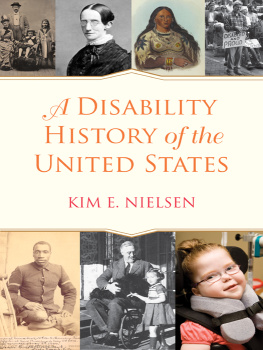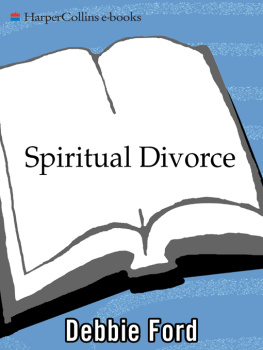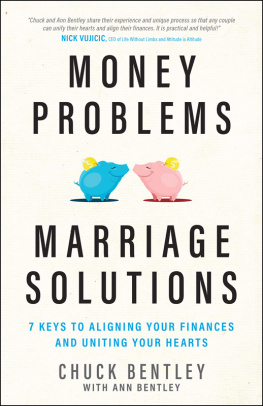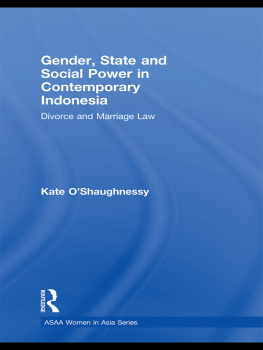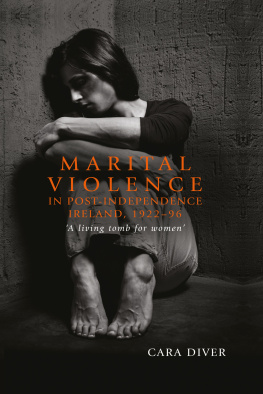Money, Marriage,
and Madness
DISABILITY HISTORIES
Series editors: Kim E. Nielsen and Michael Rembis
Disability Histories explores the lived experiences of individuals and groups from a broad range of societies, cultures, time periods, and geographic locations who either identified as disabled or were considered by the dominant culture to be disabled. Conceiving of disability and disabled experiences broadly and spanning a range of embodiments, the series highlights innovative approaches to disability history that deepen our understanding of the past.
A list of books in the series appears at the end of this book.
Money, Marriage,
and Madness
The Life of Anna Ott
KIM E. NIELSEN
2020 by the Board of Trustees
of the University of Illinois
All rights reserved
Cataloging-in-Publication Data is available
from the Library of Congress
ISBN 978-0-252-04314-7 (cloth)
ISBN 978-0-252-08501-7 (paper)
ISBN 978-0-252-05202-6 (ebook)
As always, and with all, for Maya, Morgan, and Nathan.
Contents
Acknowledgments
BOOKS NEVER HAPPEN ALONE , and the process of Money, Marriage, and Madness: The Life of Anna Ott generated lots of gratitude. This is a book I urgently wanted to write on a subject that began as a small detail among many. I appreciate the patience, forbearance, and smarts of all those who have listened to (endured hearing) me speak of Dr. Anna B. Ott for what feels like a very long time. Never before have I dragged as many family members to as many cemeteries on as many hot days as I have done during this book project.
Audience members and commentators at St. Pauls East Side Freedom Library, the American Association of the History of Medicine, the Pacific-Rim Conference on Disability, the University of Erfurt, the University of Toledo, and my very smart students provided thought-provoking questions and commentary. Staff and volunteers at the Chillicothe / Ross County Historical Society were cheerful and knowledgeable. My colleagues in Disability Studies at the University of Toledo are marvelous and prove to me once again that interdisciplinary academic programs make better scholars, both disciplinary and interdisciplinary. The funding generosity of the Friends of the University of Wisconsin Libraries, the University of Toledo, and Duke Universitys Rubenstein Library enabled pivotal research. Librarians at the Wisconsin Historical Society, the University of Wisconsin, and the Rubenstein Library provided invaluable assistanceparticularly Michaela Sullivan-Fowler, Lee Grady, and Rachel Ingold. Skilled archivist Debra Anderson of the University of WisconsinGreen Bays Cofrin Library first brought guardianship files to my attention. Anonymous reviewers at Signs strengthened this project. Dean Charlene Gilbert of the University of Toledos College of Arts and Letters cheers on her faculty with admirable skill and genuineness. Portions of this work appear in Signs and Rethinking History.
My cousins Heidi Marzen and Lynnea Nielsen fed me and provided great company during Madison research trips. Dr. Hossein Elgafy and Dr. Joseph Atallah rebooted my body, provided collegial support, and made work possible. Dr. Lori Rokicki performs bodymind preventative maintenance. The capable Kevin Kostin completed my index. Quinton Babcock, Liat Ben-Moshe, Brenda Brueggemann, Susan Burch, Susan Cahn, Angela Carter, Eli Clare, Linda Curtis, Becky Dale, Ally Day, Jim Ferris, Chelsea Griffis, Adria Imada, Alison Kafer, Stefanie Hunt-Kennedy, Linda Kerber, Cathy Kudlick, Willie McKether, Kathie Nielsen, Ron Nielsen, Katherine Ott (aka, The Other Dr. Ott), Vaskar Pahari (capable of both numerical and cooking magic), Ami Pflugrad-Jackisch, Leslie Reagan, Mike Rembis, Naomi Rogers, and David Serlin provided support of numerous kinds. James Engelhardt is a kind human being, as well as a strong intellect and editor. Susan Burch went above and beyond normal friendship duties. Carmel, Dill, Norma Jean, and Pulga provide entertainment. Nate, Morgan, and Maya keep putting up with me. Most of all, while I tend to dislike sweetie-gushing in acknowledgments, I need to sweetie-gush. Nate makes all things easier.
Money, Marriage,
and Madness
Introduction
THE LIFE EXPERIENCES of the woman who became Dr. Anna Barbara Blaser Miesse Ott would have surprised few of her contemporaries, though her life reflects the nineteenth century as few today perceive it. Ott lived in a legal context governing money, marriage, and madness that nearly all nineteenth-century women shared. She benefited from wealth, status, and whiteness, but they did not protect her from the vulnerabilities generated by sexism and ableism. Violence and coercion, coupled with resistance and tenacity, dominated her adult life. Her life story is both profoundly irregular and profoundly unexceptional.
Money, Marriage, and Madness is a story of the medical profession, a womans wealth and the gendered property laws in which she operated, domestic violence, marriage and divorce, institutional incarceration, and an alleged bank robbery. As a teenager Anna and her family migrated from German-speaking Switzerland to Winesburg, Ohio, in 1834. Her first husband, Jonathan Miesse, practiced as a physician in Chillicothe, Ohio, and upon their divorce she acquired significant financial holdings. During this time she also received medical training. After her 1856 marriage to George V. Ott she moved to Madison, Wisconsin, where she served for nearly twenty years as the only female physician in the region (one of two in the state) and garnered additional wealth. Both marriages ended in ugly legal battles. In 1873 her husband and two local physicians testified to her insanity, as well as her legal incompetency, and Anna Ott entered the gates of the Wisconsin State Hospital for the Insane (also known as the Mendota Asylum). She left when she died in 1893.
Despite what might be considered Otts historical unimportance, she is not irrelevant. Her life and the stories others told about her life reveal much about the history of marriage and divorce, womens legal precariousness in the nineteenth century, the medical profession of the late nineteenth century, and the lives of those considered insane and institutionalized. This is the biography of a woman heretofore unwritten into history, but a woman whose life mattered and matters. Her life reveals much about power, social structures, and the role of law in nineteenth-century America. I have constructed a biography, an analysis, and large claims about ableism, patriarchy, the messy nature of historical forces, nineteenth-century marriage, and institutional incarceration.
Money, Marriage, and Madness argues that law shapes lives and families, as well as the geographical and conceptual boundaries of a life, and that law itself reflects the power structures of historical periods and places. In the middle decades of the nineteenth century, every U.S. state passed some form of a womens property act, enabling married and single women to own and control their own property, and in roughly the same period passed related legislation enabling women to control their own earnings. Whether during her time in Ohio or Wisconsin or while Ott traveled the Midwest making significant land purchases, these hard-fought legal changes enabled her acquisition of wealth, made divorce far more viable, and allowed her to retain custody of her daughter, Aurelia, after her first divorce.



